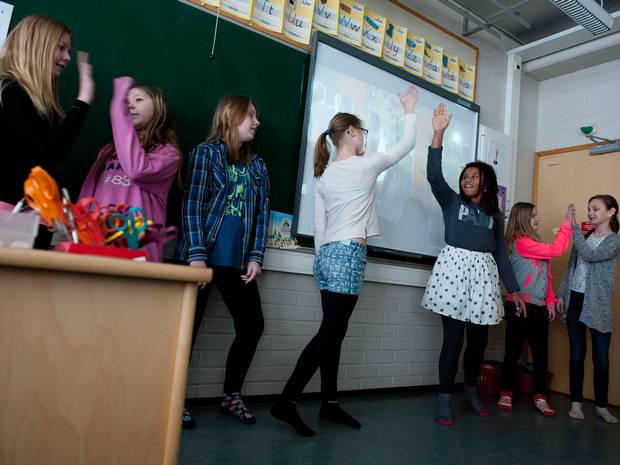 The way we teach children was designed in the nineteenth and twentieth centuries. Students in rows, learning ‘the three Rs‘ plus science, languages, and humanities.
The way we teach children was designed in the nineteenth and twentieth centuries. Students in rows, learning ‘the three Rs‘ plus science, languages, and humanities.
Finland has decided it is time to change this, to stop teaching school ‘subjects’ and start teaching ‘topics’ instead. Students learning about the European Union, for example, will study a cross-section of history, economics, languages, and geography. Instead of a model where students sit still and rely on the teacher to tell them the answers, some children rush around collecting information about different parts of Africa at the same time as others are playing chess in a corridor.
Trials with primary and secondary schools in the capital have gone well, pupil outcomes have improved, and the approach is now being rolled out across the country.
And the biggest benefit will come not from any particular new topic being taught, but from the culture that the children learn and take on as habits for what is best the way to address any new issue that arises.
One headmistress describes the new approach as:
“Joyful learning… more collaboration and communication between pupils… to develop their creative thinking skills.”
In a new century that is all about change, and where we can’t really predict what is going to happen, it is this culture and these habits of working together to address multiple ‘subjects’ that will be the biggest benefit to Finland’s children.
Chapter 7 of Inner Leadership emphasises that your vision contains two parts: the goals you want to achieve and the culture you want to have when you get there.
Goals take time to establish, and in a changing world, will probably turn out differently from what we expect. But we can implement the culture we need, “the way we do things around here,” starting from Day One. And if we get the culture right, that will help us to achieve the results we want.
Chapter 7 shows how to do this.

Pingback: Serendipity and the disconnected child – Hypnotix
Pingback: Serendipity and The Disconnected Child | CPTSDfoundation.org